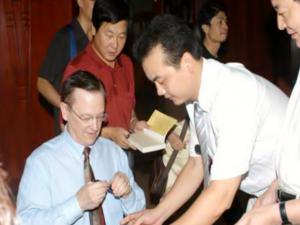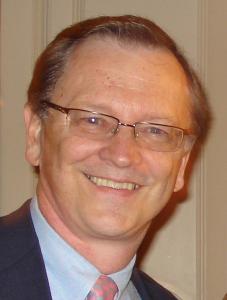UMT Report: A Promising Model for Group Decision Making
UMT Professor Looking to Honey Bees for Decision Making Guidance
ARLINGTON, VIRGINA, USA, May 2, 2017 /EINPresswire.com/ -- Which is better: Decisions made by a group or by individuals? Humans are split on this issue. Half say groups and half individuals. But honey bees are unanimous: the way to go is to make group decisions.
J. Davidson Frame, a professor of decision science at the University of Management and Technology (UMT), explores this preference in his newly published book, Framing Decisions: Making Decisions that Account for Irrationality, People, and Constraints (San Francisco: Jossey-Bass). He points out that the matter of group decision making vs. individual decision making has been debated endlessly over the decades, putting countless university students to sleep in the classroom. That is, until today. What makes the issue gripping these days is that the power of social media -- particularly crowd sourcing and "likes" registered on Facebook -- has focused attention on the actions and preferences of groups over individuals.
So how do bees do it? It turns out that in the spring, after passing the winter in torpor, bees often split into two groups in order to avoid over-populating the hive. The queen deposits several eggs that are destined to grow future queen bees for the existing hive. Then she and a large portion of worker bees leave the hive as a swarm and settle at a nearby site, often on the branch of a tree. A hundred or so scouts fan out to find a new home. When an individual bee encounters a likely site, she returns to the swarm and performs a waggle dance. This dance serves two functions. First, the dance reflects the quality of the site: the more energetic the dance, the better the site. The second function of the waggle dance is to indicate where the site is: the attitude of the dance indicates the direction of the site (for example, it can be located 20 degrees to the left of the sun), while the number of waggles indicates distance (for example, six waggles may indicate a distance of 300 meters).
This process encourages other bees to visit the site. If they like it, they return to the swarm, do their waggle dance and encourage more visitors. At a certain point, when a critical mass of visitors express favor with the site, they vibrate their wings vigorously, creating a loud hum. This indicates the decision has been made. "Debate" is ended. The swarm then flies collectively to the site and builds a new hive.
Frame points out in Framing Decisions, that crowd decision making isn't a clear cut winner with humans, as it is with bees. As Adam Smith pointed out, it works fantastically in contributing to market decisions, where the Invisible Hand is guided by the "wisdom of crowds." But it is less successful with decisions buffeted by political forces, requiring expert insights, and out-of-the-box thinking -- the kinds of decisions facing most men and women when they need to make decisions of consequence. In these circumstances, it is important for decision makers to accommodate what Frame calls the decision's social space -- the collection of the often conflicting perspectives of multiple stakeholders. Here, the best decision makers are those that are able to sort through the contending perspectives of players who do not see things eye-to-eye. As to learning from bees, probably the best lesson is to keep them at arm's length to avoid their sting.
About UMT: The University of Management and Technology is an accredited university located in Arlington VA. Since 1998, UMT has built a strong global higher learning community through its online and distance education. Geographical boundaries do not limit UMT and its students who reside in 50 states, the District of Columbia, 4 US territories in the United States, and in 78 countries worldwide. As of April 2017, UMT has provided various levels of education programs to 22,480 students. Of these, 11,510 have earned their degrees from UMT.
Christy
University of Management and Technology
7035160035
email us here
Prof. Frame discusses group decision making



